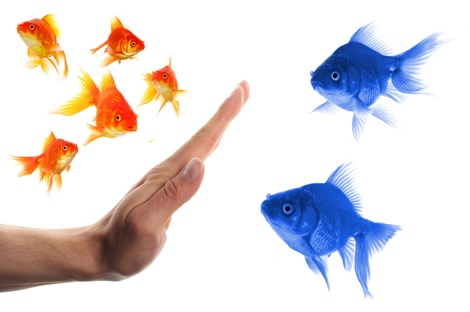Fans of Star Trek: The Next Generation may recall the foreboding day Captain Jean-Luc Picard and team met the Borg.
These strange part-human, part-AI beings evolved to form a symbiotic relationship with technology, and from infancy are outfitted with superior cyber parts as a matter of survival.
Apart from their yin-and-yang relationship with robotics, the power of these beings stems from a collective consciousness. Individually, the Borg are weak and unknowable, but as a group, they conquer civilisations, colonise planets and regenerate and evolve when attacked.

What this dystopic episode of science fiction can teach us is the power of group emotions in an age where technology is becoming an extension of humanity.
UCL Professor Martin Kilduff published a paper on the subject, combining research over the last 15 years from the fields of psychology, sociology and management. Is there a collective consciousness in business?
Emotions and identity
Can people in departments, organisations, and even entire industries experience the same emotions at the same time?
And if so, what are the causes and consequences of shared emotional states?
“Emotions are such intimate and fleeting experiences that prior scholarship has tended to assume the sharing of emotions has to involve interaction among people,” says Professor Kilduff.
“But people’s emotions are also powerfully affected by their identification with groups and by institutionalised group emotion norms.”
For example, people who identify with the same political party, hold the same nationality, have the same sexual orientation, or are smokers, tend to have similar emotions when being part of a group is important to them.
Victory or defeat in a sporting competition can evoke similar emotions in people who are widely dispersed but who identify with their sporting heroes.

An Arsenal fan in Singapore may connect just as strongly with a fellow supporter in London, for example.
Groupthink versus group feel
You may have heard the term “groupthink,” referring to the tendency of people in groups to reinforce pre-existing beliefs and ideas, regardless of whether they’re true or not. Groupthink is usually best nipped in the bud due to its proven limiting effects on creative thought, diversity, objectivity and innovation.
“Group feel,” on the other hand, implies a ripple effect of emotions on to other members of the group, and it is by making the most of this phenomenon that charismatic leaders forge their future.
Four ways to make the most of the group feel effect
The way leaders show emotions is the single most important factor in determining group feel.
1. Create shared experiences
Shared experiences tend to evoke common emotions among group members, and can bind them together in a belief of common identity and loyalty .
For example, a company sports team or department-against-department pub quiz could be a bonding experience for employees, tying them to a common goal (to win), a common identity, and camaraderie.
2. Share news with everyone at the same time
Layoffs, for example, can temporarily lead to fear, anxiety, distrust, and anger to ripple through the organisation, thanks to group feel.
Pre-empt the negative effects of group feel by sharing news, good and bad, with the whole team.
In an environment where there’s a lot of integration, inclusivity and general friendship, the positive response to good news will be magnified, boosting morale and productivity.
Similarly, the effect of bad news may become more intense if it is leaked in bits and pieces. By sharing bad news in one go, you have the opportunity to frame it in a positive way and answer any questions openly and honestly, clearing the air of distrust and anxiety.
3. Frame bad news as opportunities
If you have bad news to share, consider presenting it as a potential opportunity for the company as a whole. Using the collective plural (“us”, “we”, “our”) can cement the fact that you’re all in this together.
4. Create a common “enemy”
This may seem a little controversial, but nothing bonds a team like a common enemy. This could be a rival business, or a cause relevant to your industry (diversity in finance, for example), and can help bind teammates together in a way that can boost group performance even during times of stress.
As long as this is implementing in a healthy, non-aggressive way, working towards ‘beating’ a rival can give your team a measurable purpose
What to watch out for
While a cohesive team could do wonders for your business, it’s important to prevent cliques from forming within the units.

If group feel isn’t an effect that is across the whole organisation, the company may become fragmented, with different departments or teams bonding against the rest of the company.
It’s also important to make sure that the common glue holding the team together is based on ethnicity or gender. That could be make your work culture seem unaccessible and noninclusive to minority staff.
See also: One in three UK workers stifled by rigid workplace culture






